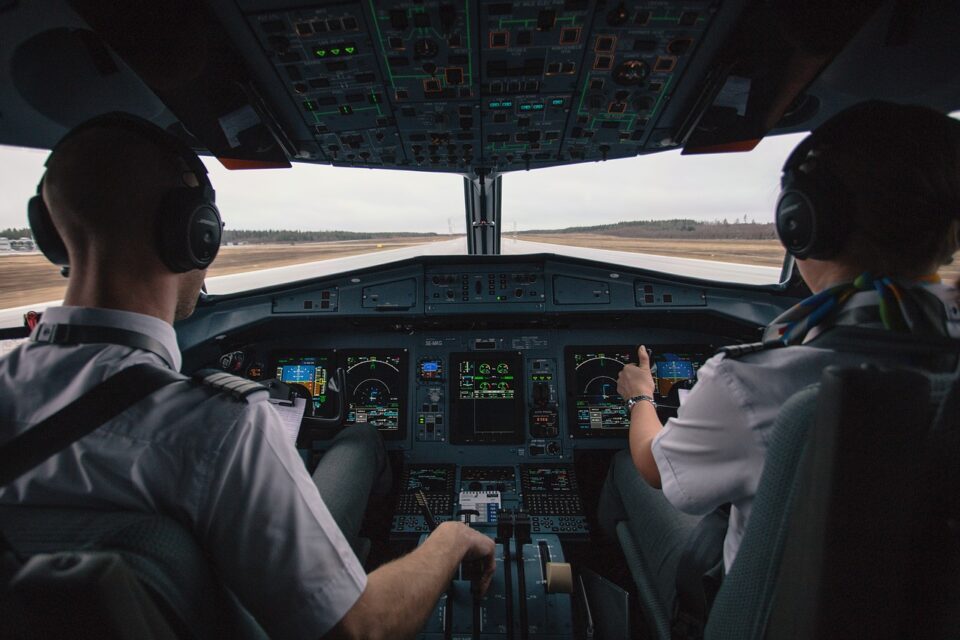Aerospace
60 Pilots, 150 Cabin Crew Members Suspended By DGCA For Failing Alcohol Test
In the past two and a half years, up to 60 pilots and 150 members of the cabin crew have tested positive after undergoing breathalyzer (BA) testing.

In the past two and a half years, up to 60 pilots and 150 members of the cabin crew have tested positive after undergoing breathalyzer (BA) testing. To ensure that the use of alcohol by pilots and other cabin crew members has not jeopardised aviation safety, breathalyzer tests are carried out. Not a single licence has been cancelled between January 1, 2020, and June 30, 2022, in accordance with the Civil Aviation Requirements (CAR) Section-5, Series-F, Part-III clause.
However, following the test, 210 pilots and crew members have been placed on suspension. Monday in Parliament, the government claimed that a formal process for reviewing safety is in place to check on the airlines’ compliance to the laws and requirements of civil aviation. During the next audit and surveillance, the operator’s actions are checked to see if they are in compliance. The DGCA imposes enforcement measures, including monetary penalties, in the event that any infractions of the regulations are found during the audit and surveillance process.
The DGCA had stated that airlines must make sure that daily preflight alcohol tests are administered to 50% of their cockpit and cabin crew members. The DCGA’s recommendation states that even 12 hours after a drinking session, if blood alcohol levels are still zero, there is a potential that performance will suffer. The advice warned that even trace amounts of alcohol jeopardise flight safety on multiple counts and are likely to adversely influence an aviator well into the hangover period.

Aerospace
Boeing Transfers Rocket Stage to NASA, Paving Way for Human Moon Mission

Boeing has achieved a significant milestone by providing NASA with the second core stage of the Space Launch System (SLS) rocket.
This crucial component, crafted at NASA’s Michoud Assembly Facility (MAF), is set to propel the Artemis II crew into lunar orbit, marking humanity’s return to deep space after a 50-year hiatus.
The monumental Boeing-built rocket stage, the largest element of the Artemis II mission, will embark on a journey aboard the Pegasus barge, traveling 900 miles to NASA’s Kennedy Space Center.
Comparison of two legendary aircraft B777x vs B747 aircraft:Click here
Upon arrival, it will be meticulously integrated with other essential Artemis II components, including the upper stage, solid rocket boosters, and NASA’s Orion spacecraft within the iconic Vehicle Assembly Building. This intricate integration process is a vital step toward the eagerly anticipated Artemis II launch, slated for 2025.
“Boeing-built products helped land humankind on the moon in 1969, and we’re proud to continue that legacy through the Artemis generation,” remarked Dave Dutcher, vice president and program manager for Boeing’s SLS program. “Together, with NASA and our industry partners and suppliers, we are building the world’s most capable rocket and paving the way to deep space through America’s rocket factory in New Orleans.”
NASA, Lockheed Martin Reveal X-59 Quiet Supersonic Aircraft:Click here
The delivery of Core Stage 2 marks a significant achievement in the evolution of the SLS rocket. Towering over 200 feet and powered by four RS-25 engines, this core stage, coupled with two solid-fueled booster rockets, will generate a staggering 8.8 million pounds of thrust. This immense power is crucial to launching Artemis II and future missions into the vast expanse of space.
The SLS rocket stands unparalleled in its capability to transport both crew and substantial cargo to the moon and beyond in a single launch. Its extraordinary capacity will facilitate the delivery of human-rated spacecraft, habitats, and scientific missions to destinations including the moon and Mars, ushering in a new era of space exploration.
-

 Travel1 week ago
Travel1 week agoAir India to Expand US Operations with Three New Routes After a Decade
-

 Travel2 weeks ago
Travel2 weeks agoWhy We Should Avoid These Stamps in a Passport
-

 Airlines1 month ago
Airlines1 month agoInvestigations Reveal Fake Chinese Titanium in Boeing and Airbus Jets
-

 Tech4 weeks ago
Tech4 weeks agoChina’s CATL Plans 1,800-Mile Electric Plane Launch by 2027
-

 Airport3 days ago
Airport3 days agoTop 10 Largest Airports in the World by Size
-

 Aerospace4 weeks ago
Aerospace4 weeks agoChina’s Fighter Jets Turn Wings into Autonomous Drones
-

 Airlines4 days ago
Airlines4 days agoAir India Rolls Out A350s for Delhi-New York JFK and Newark Routes
-

 Defence3 weeks ago
Defence3 weeks agoBoeing Enhances Chinook with New Engines and Block II Upgrades at $96 Million







